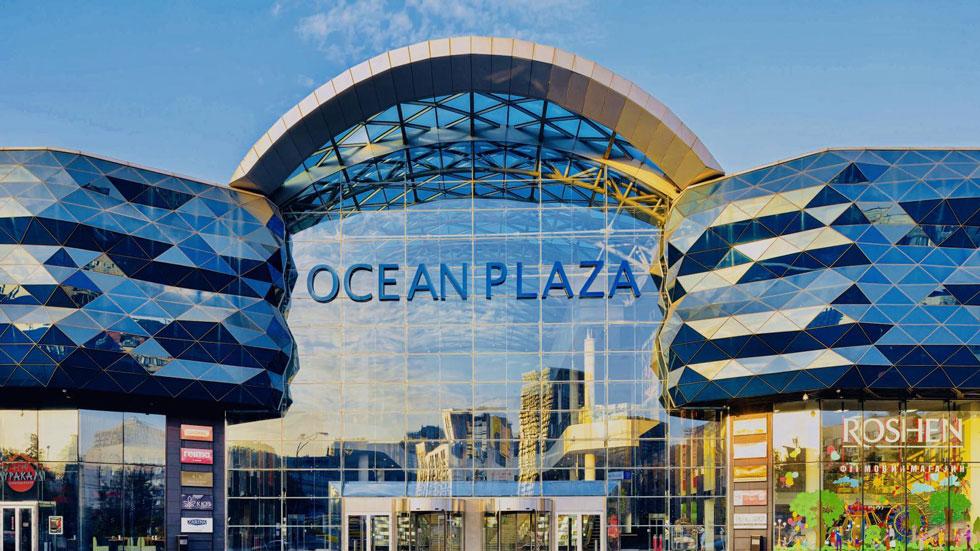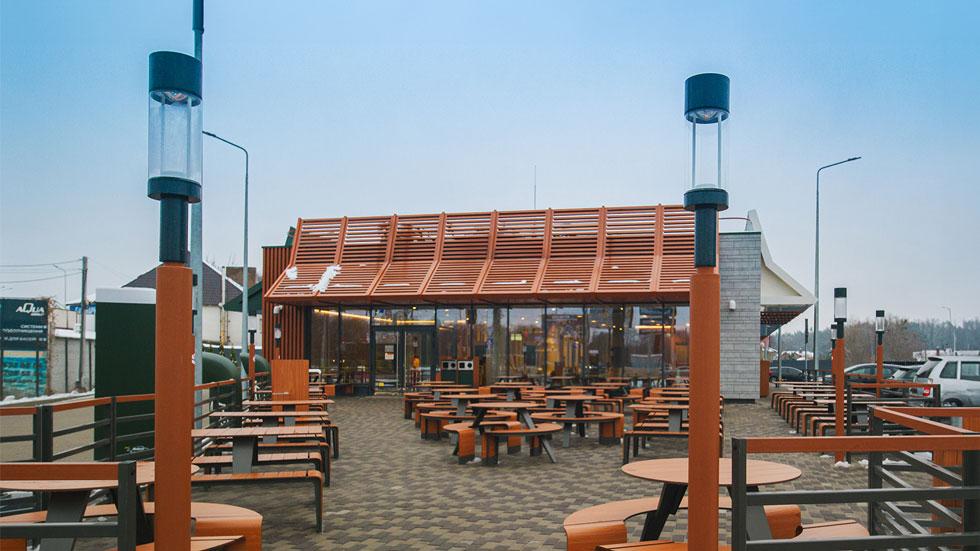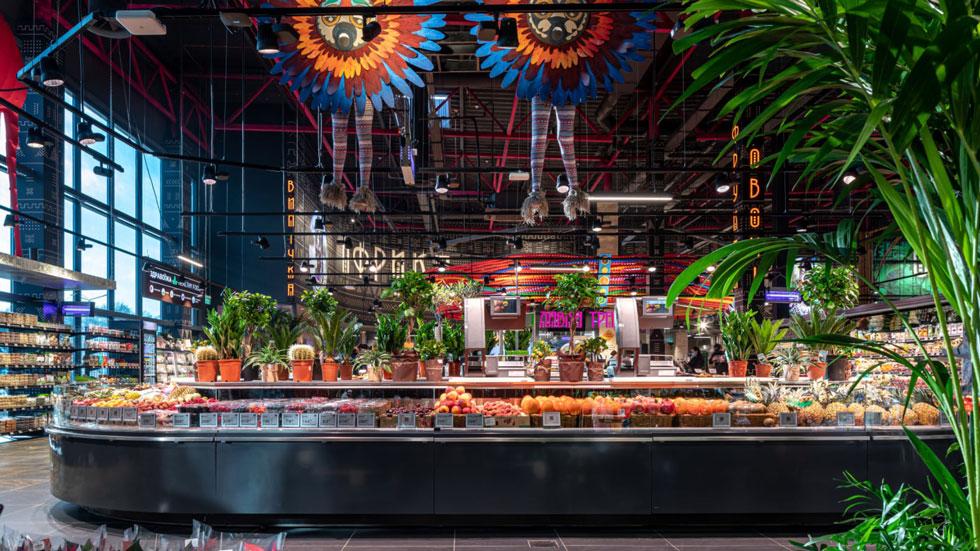
Inzhur LLC, the first and only Ukrainian REIT, was created to enable individuals to invest in small, medium, and large scale commercial real estate projects throughout the country. Since its inception in 2022, Inzhur has demonstrated resilience, social responsibility, and faith in the future of Ukraine.
Despite the many difficulties resulting from Russia’s 2022 invasion, Inzhur continues to attract domestic investments, develop new business opportunities, and support the country’s economy.
REIT.com recently spoke with Andriy Zhurzhiy, founder and CEO of Inzhur, from his office in Kyiv.
How did you manage to create a thriving investment company in a war zone with such seemingly terrible odds against success?
Inzhur’s initial success was due to a combination of factors. The infrastructural and economic chaos of the first stage of Russia’s invasion was devastating. Even today, general uncertainty and anxiety can exist in just the simple act of day-to-day living for many of us here in Ukraine.
It is a very human quality for people to want to regain control of their lives and finances when chaos and uncertainty abound. By establishing a local and democratized investment opportunity at Inzhur, specifically for the people of Ukraine, our investors have turned their hopes to working together on a brand-new opportunity—a chance for Ukraine to rebuild through investing in our country’s real estate.

Short-term, the investment model seems to meet our investors’ current needs to continue to invest in, and believe in, Ukraine. But it also appeals to people’s future hopes that one day the war will end, Ukrainian prosperity will be restored, and stability will once again prevail.
We truly believe an added incentive for our investors is the fact that the entire Inzhur team lives and works in Ukraine. We also know exactly what retail investors want, what their capabilities are, what they care about, and what conditions may seem reliable to them—even in the face of a full-scale war and uncertainty.
Inzhur continues to provide investment opportunities in properties with decent dividends. We provide absolute transparency every step of the way for our investors. It takes a lot of effort to ensure this as trust can be one of the first casualties in war.
We also incorporate our investors as part of our team by crowdsourcing our collective intelligence in order to optimize performance. The fact that even in the midst of an invasion, a new investment sector and market can grow and flourish, well, it says a lot about our faith and resilience as people and a country.
Which sectors generate the highest returns for Inzhur investors and why do they perform so well?
It’s the service and retail sectors that really stand out, with supermarkets and fast-food restaurants in particular performing well right now. In both cases, a significant part of the success is due to the anchor tenants of these facilities. Those tenants include, Fozzy Group, one of the largest commercial and industrial groups in Ukraine, and McDonald's Corp. McDonald’s outlets are consistently in demand and profitable, which is why REIT income from them always remains at a strong and consistent level.
Inzhur also has the Inzhur Ocean and Inzhur Zhytniy funds. The assets of these two platforms do not technically belong to the funds yet, but they will be acquired by our funds in public auctions soon. These assets are already profitable for their investors due to temporary investments in government bonds. Bonds tend to be the most reliable securities in a country at war, because they are backed by government securities, and they also provide monthly dividends of up to 16% per year to the co-owners of the funds.

The assets themselves are unique. For example, the Ocean Plaza shopping mall in the Inzhur Ocean fund is an iconic shopping center in Kyiv. It’s also the first of its kind to be successfully nationalized from sanctioned Russian assets and is now awaiting public privatization in Ukraine. Meanwhile, Zhytniy market in the Inzhur fund is one of the oldest markets in Ukraine. Unfortunately, under the city’s management it is in decline and it’s possible that it could completely disappear. Inzhur engaged the international agency Colliers and the Ukrainian Architectural Bureau, AVR, to develop a complete market revitalization project.
Inzhur has managed to finance this all by gathering a community of thousands of concerned investors, and together we plan to buy Zhytniy from the city to revitalize it, make it profitable, and turn it into the country's main market.
After the privatization of these facilities, the estimated average annual yield for Ocean Plaza over 10 years will be 20%, while for Zhytniy Market it will be 10%.
Inzhur has a fund that focuses on energy infrastructure. What projects are you actively investing in and how do you hedge your investments in an asset class that can be destroyed or damaged on a daily basis?
We created it in response to the great damage caused by Russian shelling. Russia has been bombing the energy infrastructure since the first day of the invasion, and they have achieved remarkable success in this incredibly destructive tactic. According to various estimates, they have already managed to destroy up to 70% of all generating capacities in Ukraine.
We thought a lot about this and began to reevaluate rebuilding Ukraine’s power infrastructure from the ground up. Instead of continuing to build giant power plants, we started to focus on developing thousands of relatively small generation facilities that could cover the entire country. So now we have many small facilities spread out over miles. That way, destroying them all at once will be much more difficult, expensive, and ultimately futile for the Russians.
This micro-grid strategy of power distribution is a crucial part of hedging investments in the Ukrainian energy sector today, alongside classic hedging instruments, such as insurance.
The energy fund has been a huge success. We managed to attract investments for the first stages of construction that includes two 18 MW plants in just over two months. The energy problem affects literally every Ukrainian, so ordinary citizens are eager to invest in this business. We are already participating in another tender from NPC Ukrenergo for the construction of a 116 MW plant.
How many investors (or co-owners) are currently in Inzhur’s funds and what is the percentage breakdown between retail and institutional investors?
As of today, Inzhur has 16,427 co-owners of funds. We believe that we are still at the initial construction stage of the Ukrainian REIT market and its credibility. In the first two years, Inzhur gathered a little more than 2,000 co-owners, and in 2024 alone we grew to more than 12,500.
Our analysis proves that the Ukrainian REIT market has huge potential and can easily accommodate millions of investors in the future. We believe that if the dynamics of trust and growth continues, Inzhur in particular, and the Ukrainian REIT market in general, will experience exponential growth.

Currently, 100% of Inzhur's investors are retail investors. REIT investing in many countries has its own unique features, and in Ukraine it is attractive to individuals. An initial retail model creates opportunities for them that did not exist before. Of course, the further growth of the Ukrainian market will lead to the emergence of institutional REIT investments, and we will evaluate this as the need arises and act accordingly.
What are some key balance sheet figures and how do you see 2025 for investors?
As of now, the value of net assets is approximately $67.7 million. In 2024, our clients received around $5 million in dividends, which on average yields 8.61%. Another important indicator for profitability realized by our clients is the capitalization of assets. For example, our assets’ values obviously increase after rebuilding and revaluation. So, this is a key indicator for the overall period of time that Inzhur has been in existence; that number is yielding around 4.33%.
Inzhur has also had recent success with our residential complex construction fund called InzhurBUD, and for this fund the actual annual return on investment amounted to 20.5%, which includes dividend income and capitalization.
Can you talk about future commercial projects that you and your investors are interested in?
We want to grow our community of investors to more than a million over the next three years. We plan to seed this growth through cooperation with top Ukrainian and international tenants that have well-known brands and multi-billion dollar revenues.
Similar to what we are already doing with McDonald's, we intend to work with other global retail chains. We also plan to continue developing the energy sector.
In the next few years, Inzhur will also focus on building infrastructure that will simplify access to the investment industry for Ukrainians and also create opportunities for transparent trading in these securities. Our ambitious goal is to become a driver of the Ukrainian investment market and the overall economy too.
How do you think the end of the war will affect Inzhur, your investors, and the future of REITs in Ukraine?
In Ukraine, we know that a lot depends on how the war ends. Overall, we believe that investment activity will increase across the board once peace has been established. Furthermore, if the REIT model has proven its viability in the most difficult of times, wartime, then we believe it basically guarantees its viability in peacetime.
Our true belief and hope is that this is a war that is not lost, but rather, is mitigated to its conclusion. This will benefit everyone: the market, Inzhur, and investors.


